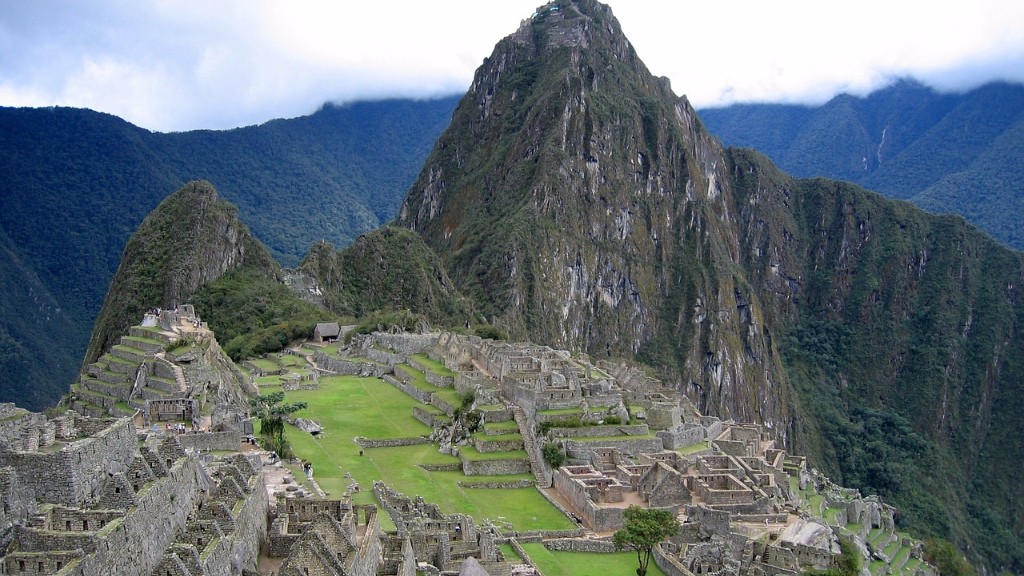The city of Pompeii and the mighty Mount Vesuvius are inexorably linked together in Roman history. This calamitous pair provide a lesson in how nature and human beings can interact, sometimes for the worst and other times for the best. But how far away is this tragedy from the volcano that razed the city of Pompeii to the ground?
The ruins of the city of Pompeii are located around 13 kilometres away from the active volcano of Vesuvius. The city is situated on the main highway that connects Naples, the capital of Campania, with Salerno. More precisely, Pompeii is located in western Campania in the Province of Naples, near the ruins of Herculaneum and Stabiae, two other towns destroyed after the eruption of Vesuvius in 79 AD.
Mount Vesuvius, a stratovolcano situated on the Gulf of Naples, has a long history of eruptions, the most famous of which occurred on August 24th 79 AD, one of the most destructive eruptions in recent history, completely burying the cities of Pompeii, Herculaneum, Oplontis and Stabiae. It was this eruption which gave Pompeii the worldwide fame it has today.
The distance of 13 kilometres seems at first glance slight, but this hasn’t diminished the significance of Vesuvius’ devastating force. That eruptions of this magnitude can occur at such short distances is a lesson that history has taught us and also a lesson that scientists have used as a basis for their research. In fact, experts believe that the super-eruption of Vesuvius was the result of the city being situated so close to the volcano, urging the local authorities to take precautionary measures led by scientific research.
These volcanic eruptions, however destructive they may be, carry with them the possibility of uncovering great secrets. Through the use of multi-disciplinary teams, combining archaeology, geology, volcanology, and seismology, it has been possible to bring the city to life and unveil many of the secrets behind the Roman Empire.
Another factor which makes the city of Pompeii more vulnerable and susceptible to eruptions is the fact that it lies in a basin of the Campania region and therefore, by its own topography, is surrounded by mountains, the most iconic and ominous being Mount Vesuvius.
The city of Pompeii, however, represents more than an archeological site, more than a geographical element, or a historical window into the Roman Empire. It is also a reminder of the fragility of mankind in face of the uncontainable power of nature. A reminder that even after 1700 years, the same scenarios could be repeated, in the face of danger science, is what can save us.
Geological Cycle of Vesuvius
Vesuvius is a typical type of volcano known as a stratovolcano, or composite volcano, which owes its features to the nature of the rock on which it is built. Stratovolcanoes are made up of different lava flows that have solidified and mixed with the existing material. As these magma streams combine, more and more material accumulates, leading to its unmistakable conical shape.
The geological cycle at Vesuvius begins with the eruption of solid material, rock and ash. Larger, coarser materials known as tephras settle nearby, while finer tephras start to reach greater distances, forming what is known as an ash cloud.
During an eruption, violent winds generated by the blast can cause clouds of debris or ballistic particles to form around the volcano, leading to the spreading of ash, toxic gases and other pollutants in the air.
The eruption of Vesuvius has a very important social and economic role in the region due to the visitation of tourists to witness the amazing powerful of this immense force of nature.
Risk of Future Eruptions
At present, Vesuvius presents a rather remarkable risk of eruption, and it is a phenomenon that experts are monitoring closely. According to the experts, the last eruption of this volcano took place in 1944, which made it the longest variety of periods of rest in the volcano’s history.
Modern monitoring techniques such as seismicity, gravity and gas measurements, as well as regular visual inspection of the crater floor, keep track of the risk of future eruptions. Scientists have found that the pressure at the base of the volcano has significantly increased in recent years and have analysed data dating back hundreds of years.
These data have also allowed researchers to estimate that a future eruption of Vesuvius isnot unlikely and that it is likely to be as powerful and destructive as the one in 79 AD. In light of this prediction, experts have drawn up evacuation plans that take into consideration the location and size of lava flowin the event of an eruption.
The risk of future eruptions by Vesuvius has led to the implementation of risk mitigation strategies in the region. This includes the establishment of a network of monitoring systems that can detect changes in the chemistry of stored materials, providing a warning for the event of an eruption.
Effects of Vesuvian Eruptions on the Environment
Volcanic eruptions can have devastating effects on the environment, with Pompeii and Herculaneum being clear evidence of this. In the recent past, however, scientists have found that the impact of such eruptions on the environment is usually short-term.
At Vesuvius the impacts are minimal or even beneficial in some cases. The amount of ash, fine material, and other substances that erupts from the volcano helps to fertilize the soil in the region and increases the fertility of agricultural land.
Volcanic eruptions also help to release minerals into the atmosphere, which can act as a filter to absorb pollutants, improving air quality and allowing the effects of global warming to be relatively minimal, in turn helping to protect the ecosystems in the region.
At the same time, it helps to protect the coastline, by serving as a buffer against rising sea levels, thus shielding the area from floods and storms. The heavy rainfall in the region is also favoured by the presence of the volcano, which helps to trap clouds, increasing humidity and allowing rainwaters to be absorbed deeply by the soil.
Protection of the Heritage Site
The Pompeii Archaeological Park was designated a World Heritage Site by UNESCO in 1997 and is now considered one of the most important archaeological sites in Italy. There are also plans to extend UNESCO’s Heritage Site list by protecting the nearby cities of Stabiae and Herculaneum, which would open up many new possibilities for the investigation of the area.
In light of this, the Italian authorities have implemented protection policies covering the region and the cities nearby. This includes regular maintenance of the city’s infrastructure and its monuments, as well as the implementation of emergency protocols in the case of an eruption.
The Italian government have also invested in advanced equipment and techniques to measure seismic activity and detect warning signs of potential eruptions. This allows experts to predict possible eruptions and take necessary steps to protect heritage sites.
In addition, archaeological and geophysical surveys reveal new information on the ancient city that could help with the study of the region’s geological history and the effects of the eruptions.
Economic Significance of Pompeii
In recent years, the improvements in the protection and preservation of the city of Pompeii have allowed for visitors to fully experience the beauty and history of the ruins. As a direct consequence, tourism has become a major economic activity in the region, one which has contributed to the preservation of the city and the region’s cultural heritage.
The archaeological site brings in millions of tourists each year, generating a significant amount of Revenue for the region and stimulating local businesses and hotels. This has had the effect of modernizing the city and creating many new jobs in the region.
The money generated for the area has also had a positive effect on the regional economy and has allowed for improvements in infrastructure, such as roads and transportation, as well as educational facilities, health centers and public services.
The city of Pompeii is a living example of the power of nature, symbolizing the fragility of human beings in the face of overwhelming forces. It is also an example of man’s capability of preserving important monuments, reviving the past, and helping the region to thrive.


